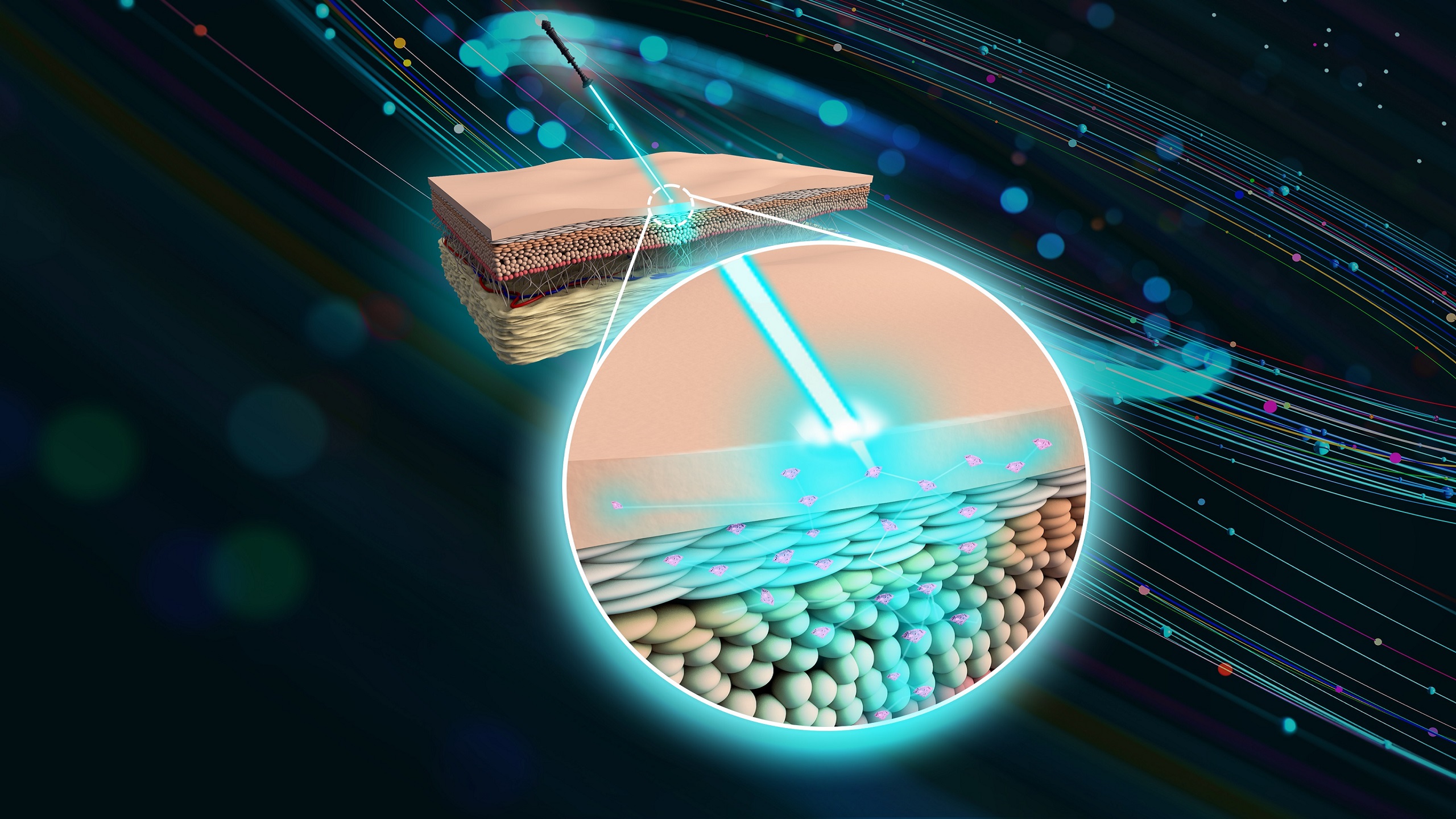Tiny Diamonds Could Be the Future of Pain-free Medicine, Israeli Researchers Find
Microscopic particles coated in medication penetrate the skin via an ointment and are measured by a revolutionary laser treatment, potentially spelling the end for some invasive treatments
Miniscule diamonds may be the key to eliminating some painful biopsies and other invasive procedures that need to penetrate the skin to be conducted effectively, thanks to a new breakthrough by specialists at Israel’s Bar-Ilan University near Tel Aviv.
The researchers from the university’s Institute of Nanotechnology and Advanced Materials, working in conjunction with members of the institution’s Faculty of Engineering and Department of Chemistry, have produced diamonds so small that they can safely and painlessly pass through the skin’s surface into the layers beneath – and developed a laser-based system to ensure that these diamonds are in the right place and in the right amounts.
The tiny diamonds are delivered by being mixed into a special ointment that is applied to the skin’s surface, the university says, allowing them to pass through the cells in the relevant area.
Bar-Ilan says the nanodiamonds, measuring just one-millionth of a millimeter, are created inside a closed chamber by detonating explosives using high temperatures and pressures. These conditions allow the carbon atoms found in such explosions to bind together and form nanodiamonds.
The nanodiamonds are capable of administering specific medications to specific locations, according to the university, with the method building on previous research showing the efficacy of drug delivery using nanoparticles.
Give the gift of hope
We practice what we preach:
accurate, fearless journalism. But we can't do it alone.
- On the ground in Gaza, Syria, Israel, Egypt, Pakistan, and more
- Our program trained more than 100 journalists
- Calling out fake news and reporting real facts
- On the ground in Gaza, Syria, Israel, Egypt, Pakistan, and more
- Our program trained more than 100 journalists
- Calling out fake news and reporting real facts
Join us.
Support The Media Line. Save democracy.


Furthermore, the university says, the nanodiamonds are effective antioxidants that can be coated with medication before passing through the skin, making them both safe and therapeutic.
“The issue is that in effect when you use [certain] medication … it is very difficult to know whether it is having an impact deep in the tissue. It is also very difficult today to know whether there is a problem within the body, under the surface,” Channa Shapira, a member of the Bar-Ilan research team, tells The Media Line.
Tracking the nanodiamonds once they have been administered is carried out using revolutionary advanced optical technology that measures their presence in the various layers of the skin.
Patients are briefly exposed to a blue wavelength laser beam, a rare departure from the red beams more commonly used in medical treatment, which allows a special optical system to create a 3D image that can see exactly where the particles are concentrated in the skin.

Nanodiamonds permeating through skin layers are measured by a blue wavelength laser. (Courtesy Prof. Dror Fixler)
“This system enables you to know how deep the medication has penetrated and the medical condition of the tissue,” Shapira tells The Media Line.
“This is a significant development in dermatology and in optical engineering,” Prof. Dror Fixler, a member of the research team and director of Bar-Ilan’s Institute of Nanotechnology and Advanced Materials, says in a statement released by the university.
“It could open the door to developing drugs applied through the skin alongside modern cosmetic preparations using advanced nanotechnology,” he says.
Fixler also says that the team is carrying out a safety assessment on the process.
“To date we have determined that nanodiamonds do not reach the bloodstream, which is a very positive sign,” he told The Media Line.
Bar-Ilan is not the only institute researching the benefits of nanodiamond technology in the scientific world. Kyoto University in Japan has been working on a method of measuring temperatures within living cells using the tiny particles. The small size of the nanodiamonds allows for them to measure temperatures without damaging the targeted cells, which had not previously been possible.

